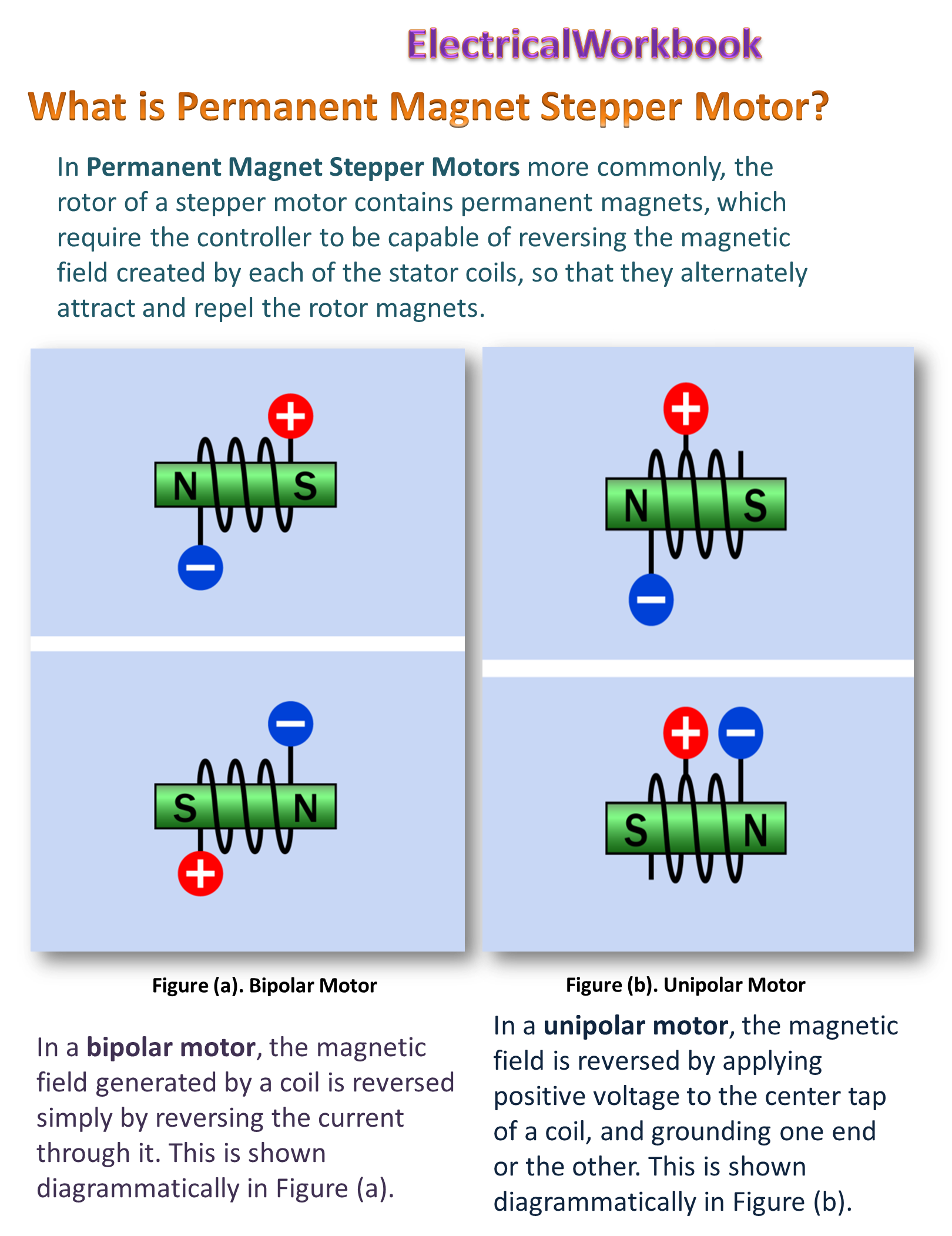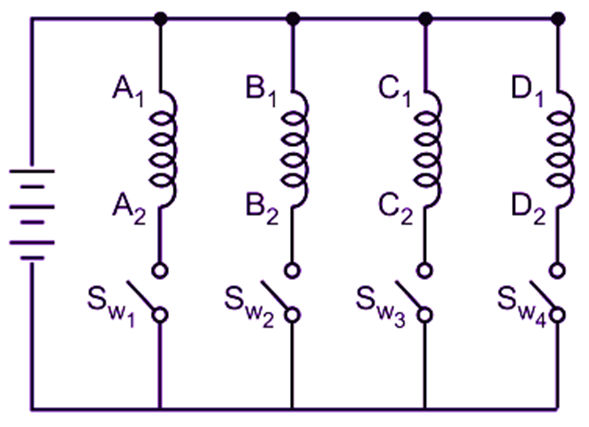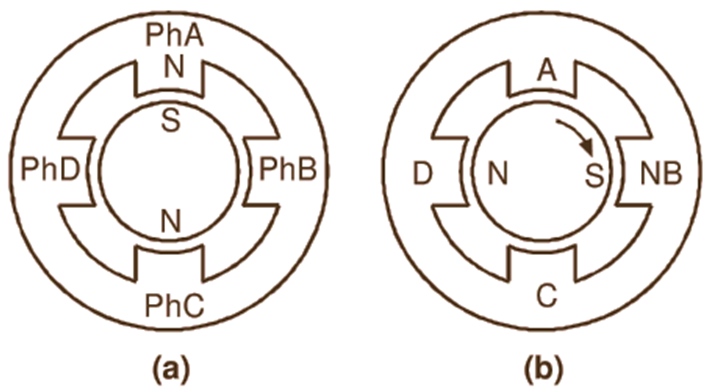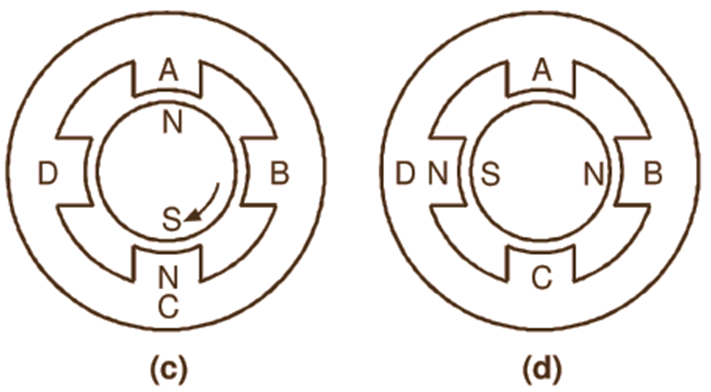In this topic, you study Permanent Magnet Stepper Motor – Working, Circuit Diagram & Construction.

This type of a stepper motor employs a permanent magnet in its rotor construction, it is called a permanent-magnet stepper motor.
Construction of Permanent Magnet Stepper Motor
Fig. 1 (a) shows a schematic of a basic four-phase, 2-pole, permanent-magnet stepper motor. The stator has four poles (or teeth) around which exciting coils are wound. The rotor is of cylindrical type and made of ferrite material which is permanently magnetized. The basic scheme for the driving circuit is shown in Fig. 1 (b).

(a)

(b)
Fig. 1. (a) Cross-sectional view of a four-phase, permanent-magnet stepper motor, (b) Basic drive circuit
Working of Permanent Magnet Stepper Motor
If the phases are excited in sequence A – B – C – D – …., due to electromagnetic torque developed by the interaction between the magnetic field set up by the exciting winding and the permanent magnet, the rotor will be driven in clockwise direction as shown in Fig. 2. In this case, the Step angle will be obviously 90o.
Reduction in Step Angles of Permanent Magnet Stepper Motor
The reduction in step angle can be achieved by increasing the number of Stator phases and rotor poles. However, due to difficulties in construction, stepper motors with permanent magnet rotors cannot be manufactured in small size with large number of poles, hence small Steps are not possible. The special feature of the permanent-magnet stepper motor is that when on no load, the rotor comes to rest at a fixed position even if excitation ceases. Such positions are referred to as the detent positions. In general, these positions coincide with the rest positions (or equilibrium positions) under excited conditions, as long as only one phase is excited.


Fig. 2: Steps in a four-phase, permanent-magnet stepper motor
There are two obvious disadvantages in the use of a permanent magnet in the construction of the motor :
- The magnet is costly.
- The maximum flux density level and hence the torque developed by the motor are limited by the level of magnetic remanence of the magnet.